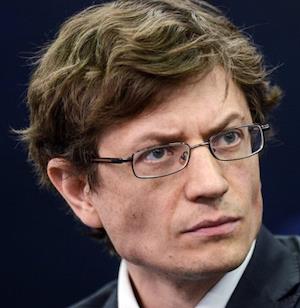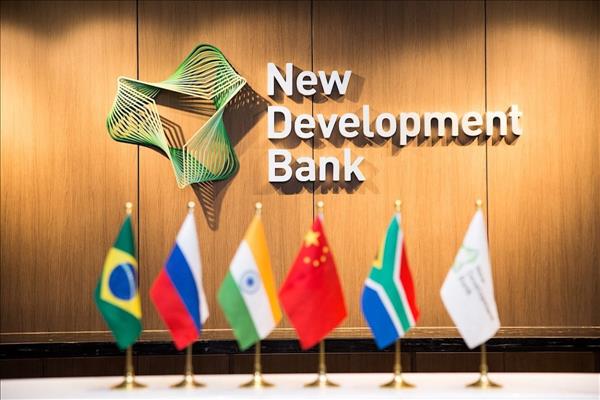
BRICS+ 2.0: Toward A Polycentric World Order
The following is an interview with Yaroslav Lissovolik , a program director at the Valdai Discussion Club in Russia.
Adriel Kasonta: When it comes to regional cooperation in the Global South, traditional (Western) integration theories don't seem to be giving justice to this non-Western phenomenon, especially when BRICS is concerned. Would you be so kind as to explain the nature of BRICS in the context of the South-South cooperation and tell our readers Russia's role in this project?
Yaroslav Lissovolik: The role of BRICS is first and foremost [to expand] the possibilities for the Global South to forge ahead with economic modernization. This may involve not only measures aimed at boosting South-South cooperation, but also cooperation with the advanced economies.
BRICS is not about confrontation with the developed world, nor is it about forsaking the Bretton Woods institutions in favor of any successor organizations – in fact [Brazil, Russia, India, China and South Africa] all openly acknowledge the importance of such global institutions as the IMF, the World Bank and the WTO.

Yaroslav Lissovolik.
Rather, what the BRICS propose is to complement the existing framework of global organizations with new institutions, as well as to allow for more optionality and more possibilities for the Global South economies to pursue various modernization paths and models in line with their national priorities and development needs.
As regards Russia, since the creation of the BRICS grouping, Russia [has seen] its role within bloc as one of the engines of building alliances with the developing economies and thus diversifying its trade and investment in favor of the Global South.
The Global South realm is likely to become an increasingly important part of Russia's trade structure in the coming years as well as a key platform for the use of BRICS national currencies and BRICS payment systems.
AK: It seems that the conflicting interests of the Global North and the Global South nations make it impossible to solve current climate, environmental and migration problems worldwide. If this observation is correct, then is the emergence of regionalism the cure to this ill within the current global governance framework?
YL: In my view the current framework of global governance is indeed out of sync with the development needs of the world economy, and the North-South divide is only one of the many manifestations of such a disconnect. There is also of course the severe underinvestment in human-capital development, most notably in the sphere of health care.
Perhaps the most patent manifestation of the shortcomings of the current global construct is the sharp increase in income inequality within countries and the“inequality of opportunity” between the developed and developing economies in terms of their integration into the global economy.
Regionalism can play an important role in allowing developing countries to become more integrated into the world economy. Greater activism on the part of the Global South in creating regional and trans-regional alliances will allow the developing world to close the“integration gap” with the advanced economies.
In terms of figures, several years ago the average number of [free-trade agreements] for the least developed countries was 0.3 agreement per country, while for the most advanced economies this measure reached 14.7 (a difference of more than 40 times). If other types of integration arrangements are included into the calculation, then the corresponding figures are 1.6 and 16.8 respectively, leaving a more than tenfold differential between the two groups of countries.
AK: Can we say that regionalization and globalization are complementary processes? If yes, then how does it work when it comes to the BRICS example?
YL: In my view there are important complementarities as well as tensions/contradictions in the interplay between globalism and regionalism. Regional integration blocs may be perceived as substitutes with respect to global institutions such as the WTO. In cases where regional integration arrangements are introvert and resort to high protectionist barriers, the effect is trade diversion and an adverse impact on globalization.
In the case of BRICS members, we are witnessing a more open and inclusive approach to regionalism, something that should impart positive effects on the openness of the global economy. One case in point is the largest regional integration grouping in the world that was spearheaded by China together with ASEAN – the creation of this regional bloc is an important contribution to the trade liberalization and openness in the global economy.
Another aspect associated with BRICS is the cooperation among the regional integration arrangements where BRICS countries are members. In particular, the Eurasian Economic Union in the past several years signed memoranda of understanding with the Southern Common Market (MERCOSUR ) and the African Union .
This coordination between the regional integration arrangements of BRICS countries (what may be referred to as the“integration of integrations”) is one of the most promising tracks of cooperation in building a more inclusive system of governance that via regionalism becomes accessible to small economies from the Global South.
Such a platform for the cooperation of regional integration arrangements is all the more important given that there is currently a major gap in the global-governance construct, whereby there is no mechanism of horizontal coordination/cooperation among regional integration arrangements – this is despite the growing importance of regionalism in the past several decades in the sphere of trade and investment liberalization.
While such a platform at the global level could theoretically emerge on the basis of a regional offshoot of G20 (a regional 20/R20 – as per the Valdai Club's proposal at the T20 meeting in Tokyo in 2019), in practical terms BRICS appears to be the grouping that is increasingly intent on pursuing the path of establishing closer cooperation among the regional arrangements and their development institutions.
AK: Maria L Lagutina, in her peer-reviewed article titled“BRICS in the world of regions,” sees BRICS as a reformer of international order. What is your take on that?
YL: Maria Lagutina's research in the sphere of BRICS and regional development has been an important contribution for scholars working in this field – her most recent article titled“The regional dimension of BRICS cooperation” on BRICS and regionalism does suggest that there may be possibilities for using the potential of South-South regionalism in the context of BRICs cooperation in building a polycentric system of global governance.
In particular she notes in her article that“within BRICS a multi-layered governance system is emerging that effectively combines the mechanisms of regional and global governance.”
I share the view that BRICS has the ingredients of serving as a platform for transforming the current system of global governance in the direction of greater openness and inclusiveness. All BRICS countries are present in all of the main regions of the Global South; they have created new institutions such as [the New Development Bank] that prioritize sustainable development and greater cooperation along the South-South axis.
While there may be occasional difficulties and disagreements among members, the overall track-record of BRICS cooperation provides a firm foundation for further progress in building a polycentric and inclusive global governance system.
AK: While it is fair to say that Russia is the spiritus movens behind turning Jim O'Neill's idea into a political reality by adding“B” into his RICs concept, China originated the idea of“BRICS+.” Could you tell us a bit more about this project? What are its strengths and weaknesses?
YL: BRICS+ is an innovative concept that opens up myriad possibilities to pursue cooperation between BRICS and their partners from the Global South. It is not about the expansion of membership of the BRICS itself but rather the concept is directed at building multiple frameworks for cooperation between the BRICS economies and the various circles of friends/partners.
One track that is already being implemented is the expansion in the membership of the New Development Bank (NDB) – in effect projects in connectivity, green development, etc become available for a greater array of countries from the Global South.
Another possible track is the creation of an aggregation platform for the regional arrangements in which the BRICS countries are members.
This platform may be augmented/reinforced by a platform for the regional development institutions (regional development banks and regional financing arrangements), in which BRICS countries are members.
In one of my recent articles I proposed what I called the“BRICS+ 2.0” framework that would be based on the cooperation among the regional integration blocks and their development institutions in which BRICS countries are members.
The added flexibility element in such a platform would be the plurilateral character of such cooperative BRICS+ platforms, leaving open the possibility for bilateral and plurilateral agreements to complement the core network of regional alliances formed by BRICS countries and their respective regional neighbors.
There are also discussions about the possibility of a BRICS++ framework that would open up the possibilities for the BRICS economies and their regional partners to cooperate with advanced economies in regional arrangements (such as the Regional Comprehensive Economic Partnership ) as well as in development institutions (the Asian Infrastructure Investment Bank being a case in point).
The BRICS+ framework allows the BRICS to share their development and their growth impulses with the rest of the Global South. This may be particularly important during global downturns as the BRICS+ framework may serve as an anti-crisis platform through the stimuli delivered from the BRICS and their development institutions to their regional partners.
At the same time there may be objective difficulties with a swift implementation of the BRICS+ project as it involves close coordination and consensus among its members on the future pathways for building these“circles of friends.”
After the BRICS+ summits in 2017 and 2018 in China and South Africa respectively, Brazil under Jair Bolsonaro opted not to conduct BRICS+ meetings.
Nonetheless, the BRICS+ project is likely to be back on track in 2022 during China's chairmanship in the BRICS, and in the coming years it is likely to be one of the key items on the BRICS agenda because ultimately it is what the mission of the BRICS is all about – to share development and growth with the rest of the world, rather than being introvert and focused exclusively on intra-BRICS cooperation.
AK: The financial crisis of 2008 is seen as a critical element in strengthening the narrative of multi-polarization and the moment when globalization has entered a new stage of development. Is it possible that the current crisis related to the ongoing conflict in Ukraine can catalyze further redistribution of power centres, thus strengthening BRICS?
YL: While it may be a popular tenet that crises stimulate economic development and reforms (this dictum was frequently made with respect to the need for reforms in Russia on the back of low oil prices), it is always preferable for the global economy to have the capability to change and reform without crises as the agent of transformation.
In this regard, the real catalyst of the strengthening of BRICS (and BRICS+ more broadly) will be the sizable demand in the global economy for new international financial centers, new reserve currencies, new modernization success stories.
The world economy is in“shortage mode” and in need of greater divergence rather than convergence towards one standardized model of development. The BRICS offer precisely what the world economy needs at this juncture – a greater set of development models, institutions, projects and platforms for integration of the countries of the Global South into the world economy.

Legal Disclaimer:
MENAFN provides the
information “as is” without warranty of any kind. We do not accept
any responsibility or liability for the accuracy, content, images,
videos, licenses, completeness, legality, or reliability of the information
contained in this article. If you have any complaints or copyright
issues related to this article, kindly contact the provider above.


















Comments
No comment